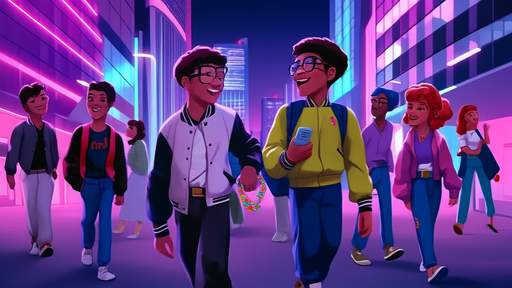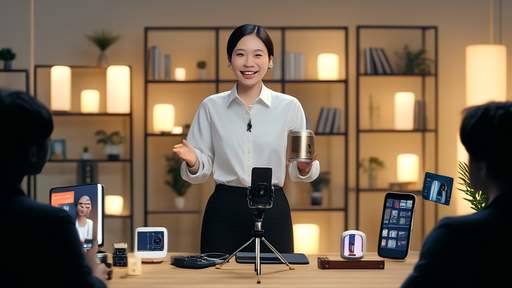Nostalgia marketing has emerged as a powerful tool in the modern marketer’s arsenal, tapping into the collective memories and emotions of different generations. By evoking feelings of warmth, familiarity, and longing for the past, brands can create deep emotional connections with their audiences. This strategy goes beyond mere aesthetics or retro packaging; it’s about triggering specific generational touchpoints that resonate on a personal level. Whether it’s the neon hues of the 80s, the grunge aesthetic of the 90s, or the early internet culture of the 2000s, each era carries its own unique emotional weight.
The allure of nostalgia lies in its ability to transport people back to simpler times, often perceived as happier or more carefree. For Baby Boomers, this might mean recalling the golden age of rock ’n’ roll or classic Americana. Gen Xers might feel a pang of recognition at references to cassette tapes or Saturday morning cartoons. Millennials, on the other hand, are drawn to the pixelated graphics of early video games or the dial-up internet sounds that defined their childhood. Even Gen Z, despite their youth, has begun to romanticize the early 2010s, with its viral memes and nascent social media platforms. The key for marketers is to identify which cultural moments hold the most emotional currency for their target demographic.
Why does nostalgia work so effectively? Psychologists suggest that nostalgic reminiscence serves as a coping mechanism, offering comfort in times of stress or uncertainty. In an era marked by rapid technological change and global instability, consumers are increasingly seeking solace in the familiar. Brands that can authentically recreate these moments—whether through product design, advertising campaigns, or experiential marketing—stand to build stronger loyalty. However, the challenge lies in striking the right balance. Overdoing nostalgia can come across as gimmicky, while underplaying it may fail to trigger the desired emotional response.
Take, for example, the resurgence of vinyl records among younger audiences. While the format is decades old, its revival isn’t just about sound quality—it’s about the tactile experience of handling a record, the artwork, and the ritual of playing music in an age of digital streaming. Similarly, fashion brands like Champion or Fila have successfully repositioned themselves by leaning into their heritage, appealing to both older consumers who remember them from their youth and younger ones who crave vintage authenticity. These examples highlight how nostalgia can bridge generational gaps, creating a shared cultural language.
The digital age has amplified nostalgia’s reach. Social media platforms like Instagram and TikTok are awash with throwback content, from #TBT posts to viral challenges recreating decades-old trends. This digital nostalgia isn’t limited to passive consumption; users actively participate by sharing their own memories or reinterpreting past trends. For marketers, this presents an opportunity to engage audiences in co-creation, turning nostalgia into a collaborative experience. Limited-edition product drops, reboots of classic TV shows, or even virtual reality experiences that simulate bygone eras can all tap into this desire for connection.
Yet, nostalgia marketing isn’t without its pitfalls. Misjudging the cultural significance of certain eras or symbols can lead to backlash, especially if a brand’s attempt feels insincere or exploitative. For instance, a fast-food chain resurrecting a discontinued menu item might delight fans, but if the product fails to live up to their memories, the campaign could backfire. Authenticity is paramount—consumers can quickly detect when a brand is pandering rather than paying genuine homage. The most successful campaigns are those that honor the past while adding contemporary relevance, ensuring the nostalgia feels fresh rather than recycled.
Looking ahead, the role of nostalgia in marketing is likely to evolve as new generations come of age. What today’s teens find nostalgic in 20 years will differ vastly from what resonates now. Brands that can anticipate these shifts—and understand the underlying emotions driving them—will remain ahead of the curve. After all, nostalgia isn’t just about looking backward; it’s about finding meaning in the past to enrich the present. And in a world that often feels fragmented, that emotional continuity is more valuable than ever.

By /Jun 3, 2025

By /Jun 3, 2025

By /Jun 3, 2025

By /Jun 3, 2025

By /Jun 3, 2025

By /Jun 3, 2025

By /Jun 3, 2025

By /Jun 3, 2025

By /Jun 3, 2025

By /Jun 3, 2025

By /Jun 3, 2025

By /Jun 3, 2025

By /Jun 3, 2025

By /Jun 3, 2025

By /Jun 3, 2025

By /Jun 3, 2025

By /Jun 3, 2025

By /Jun 3, 2025

By /Jun 3, 2025

By /Jun 3, 2025